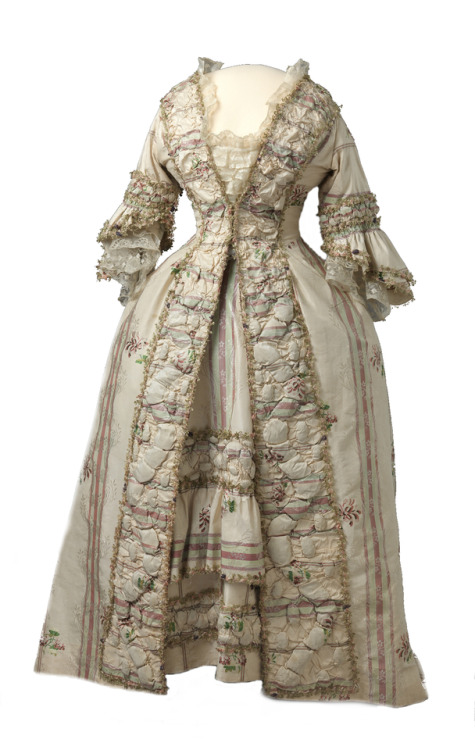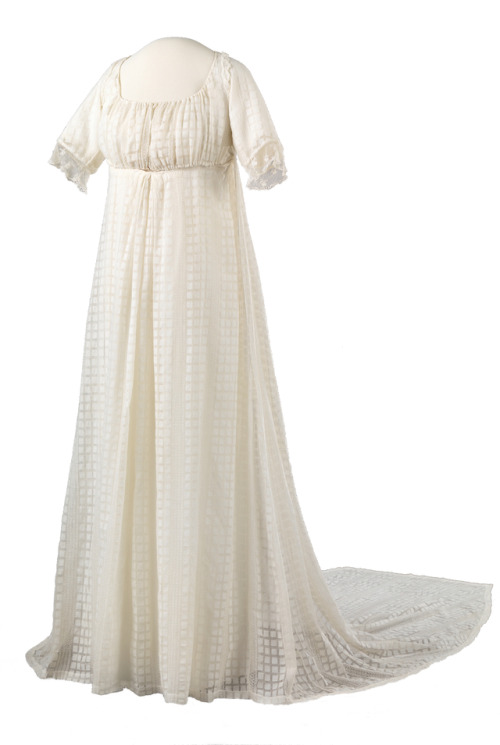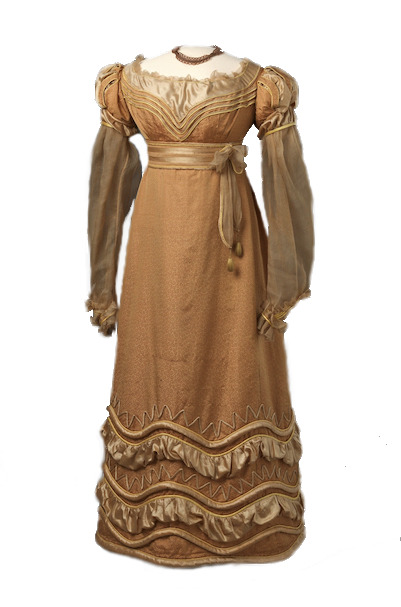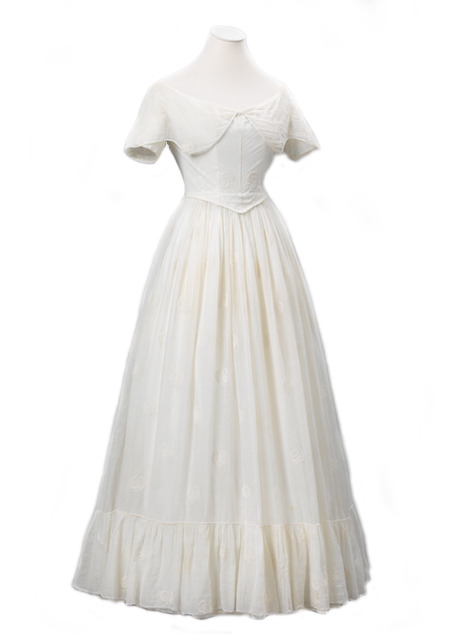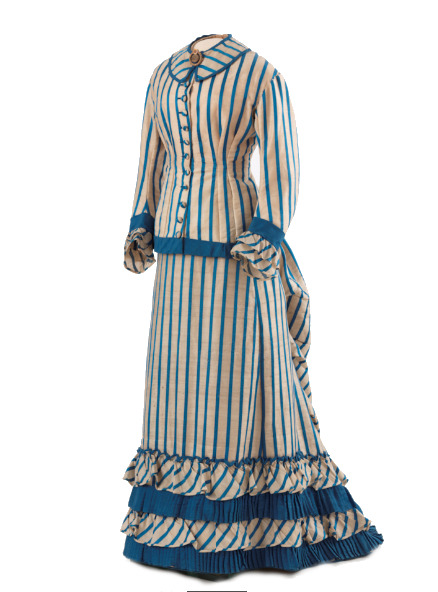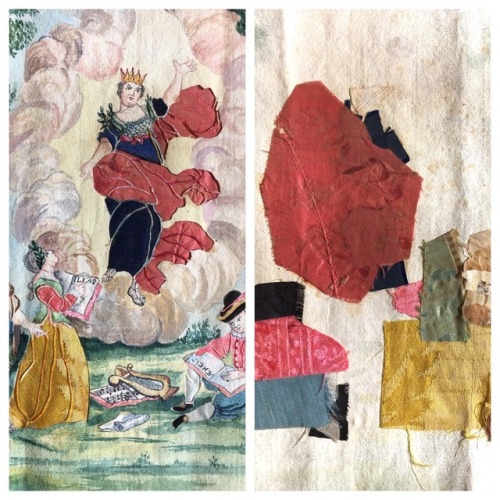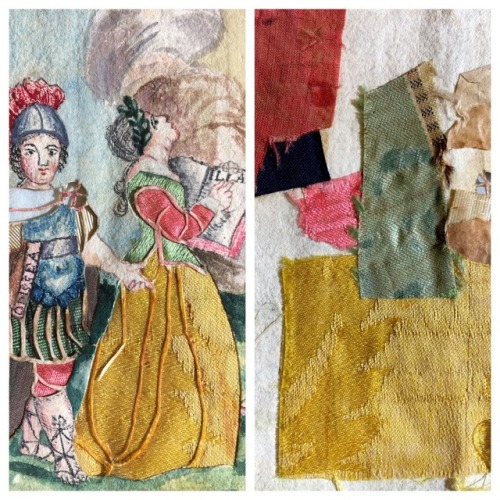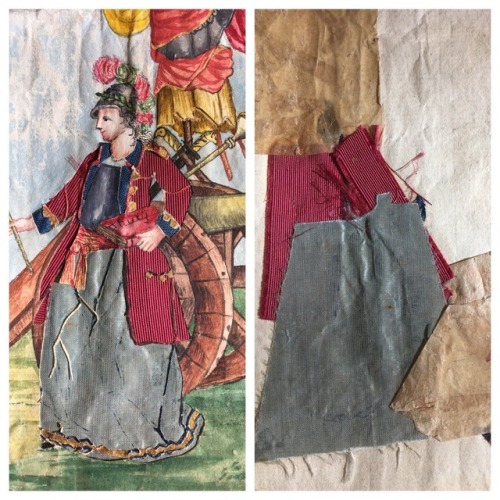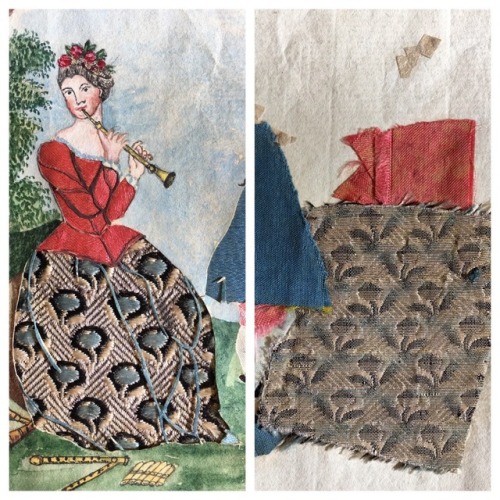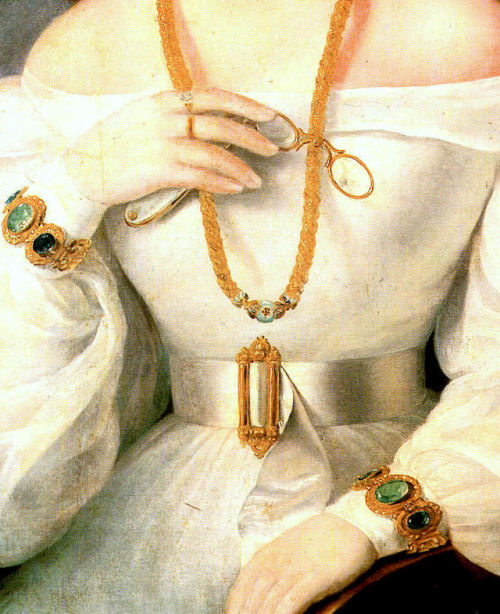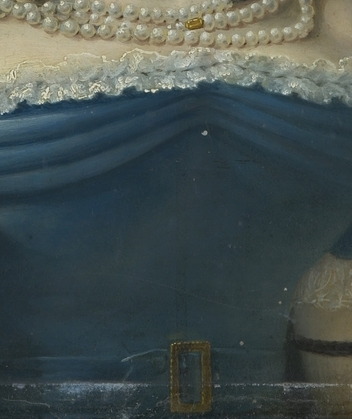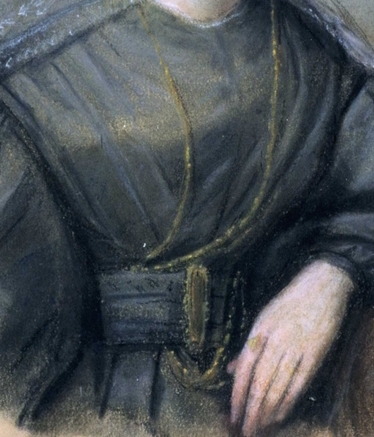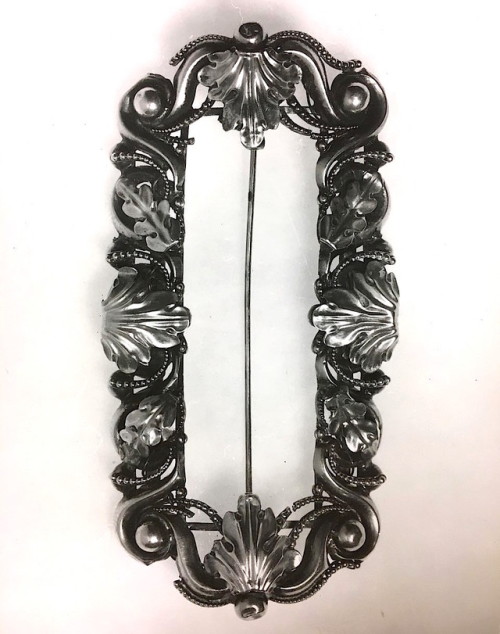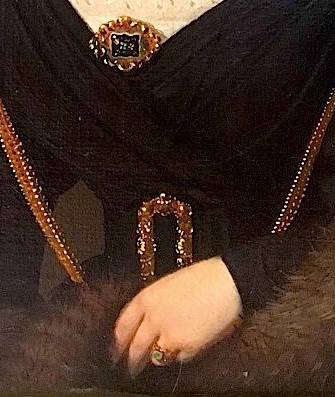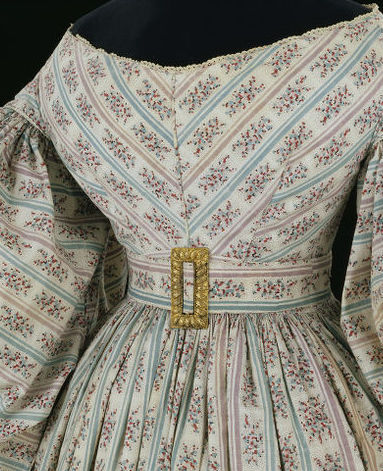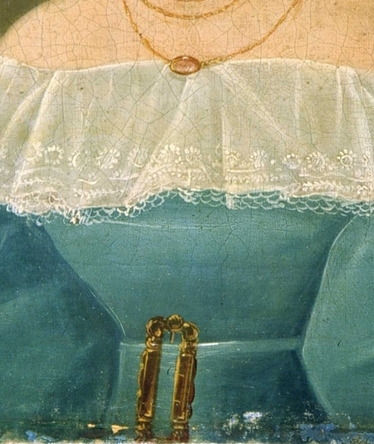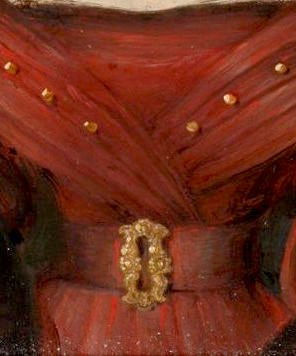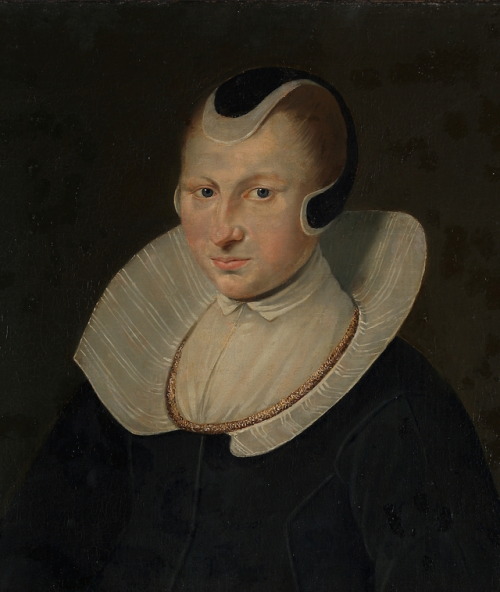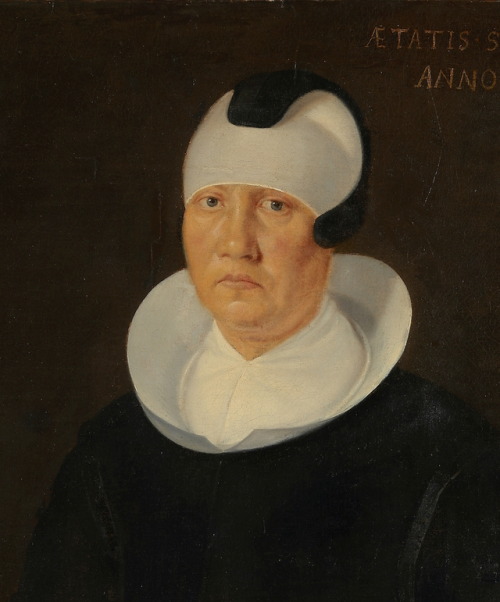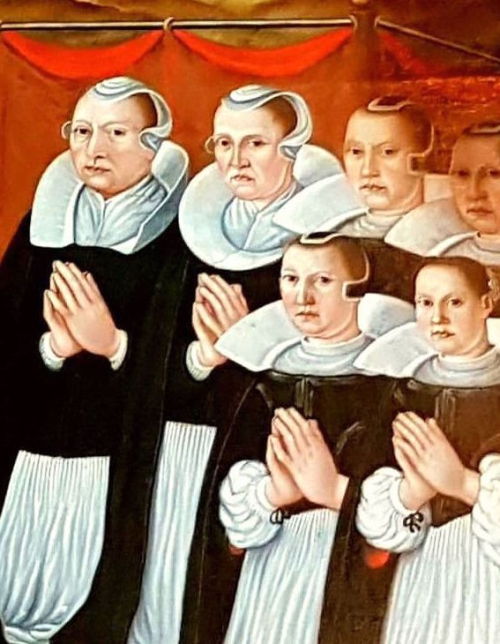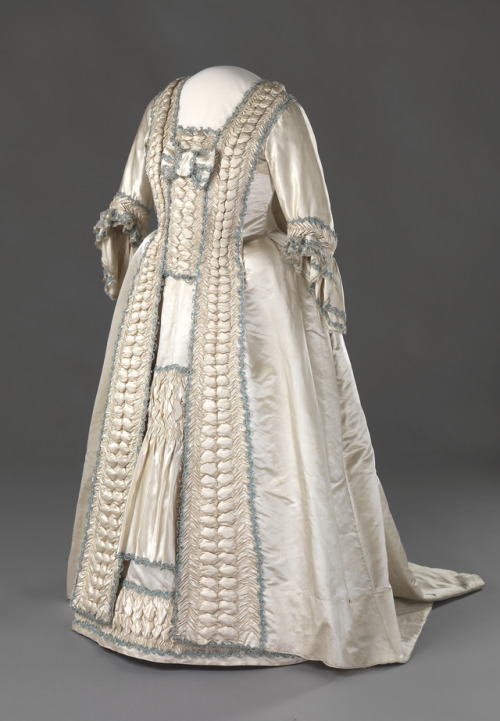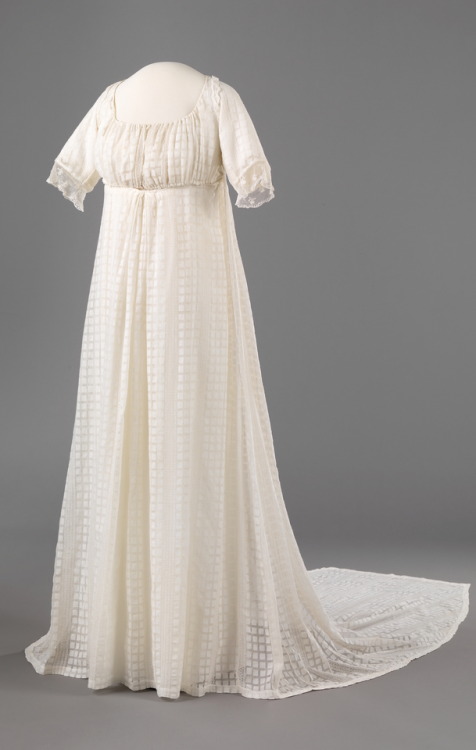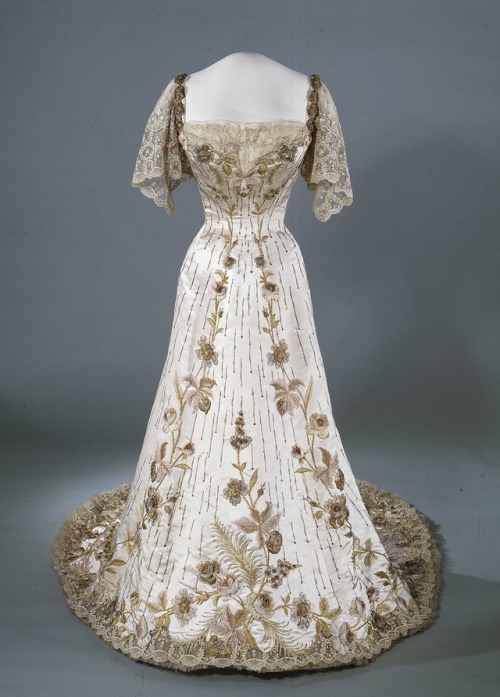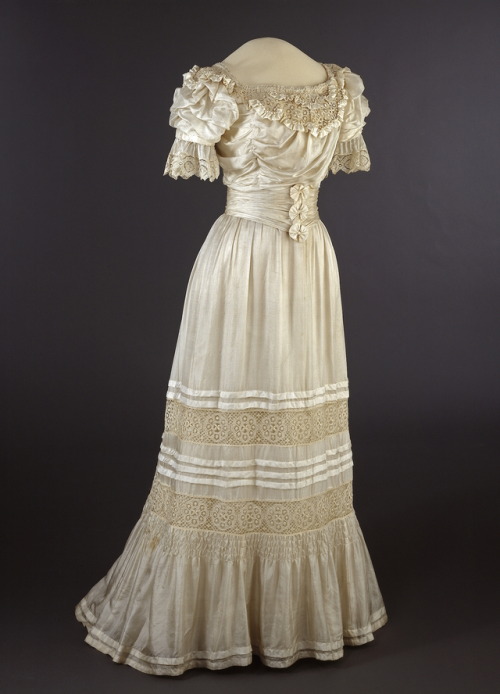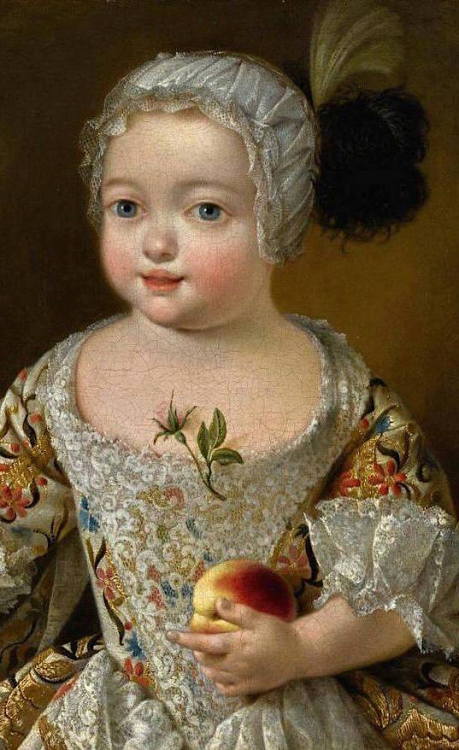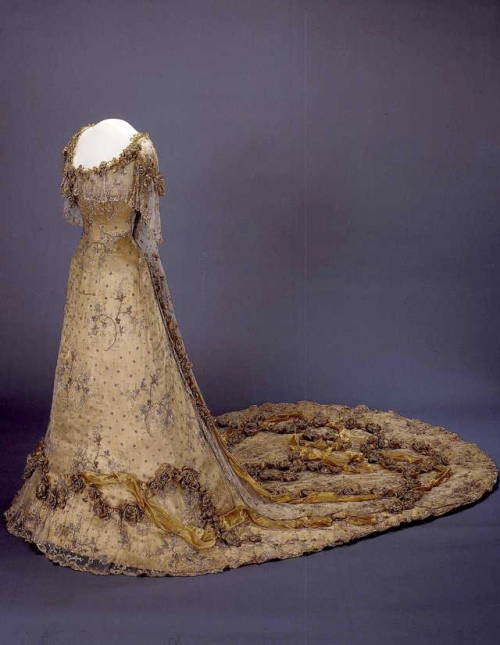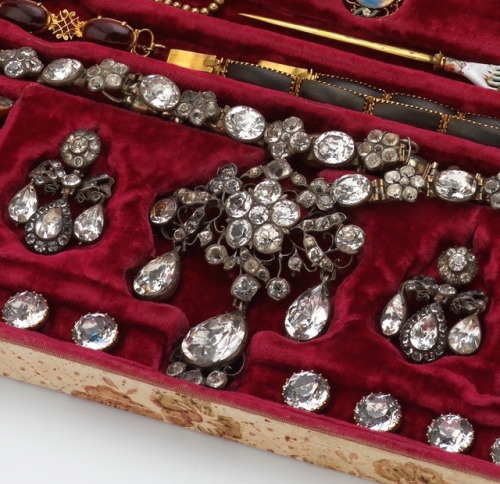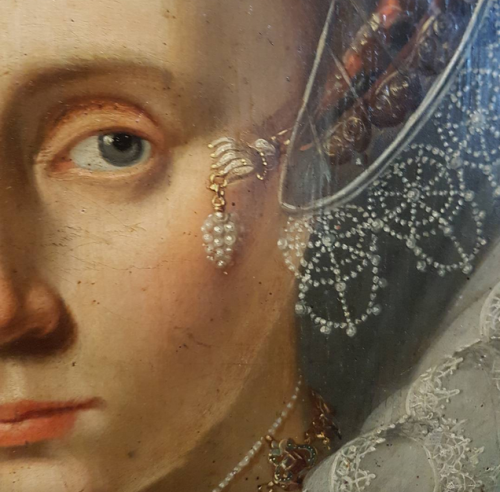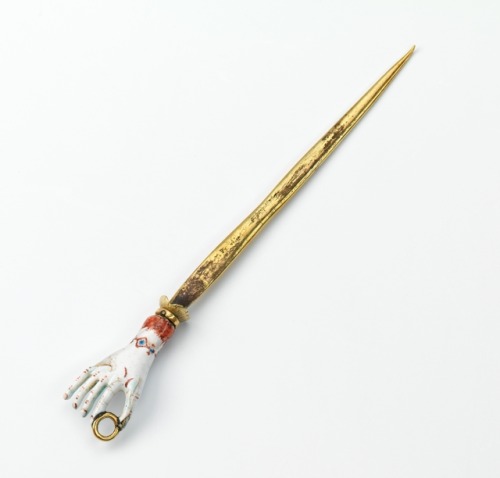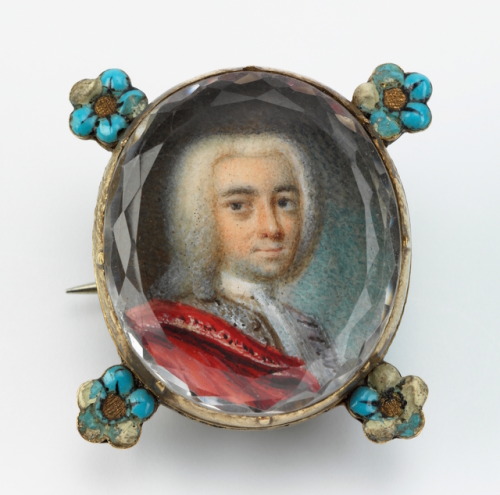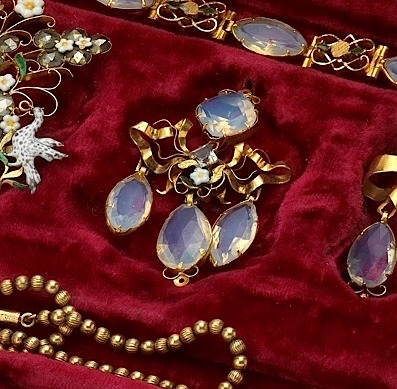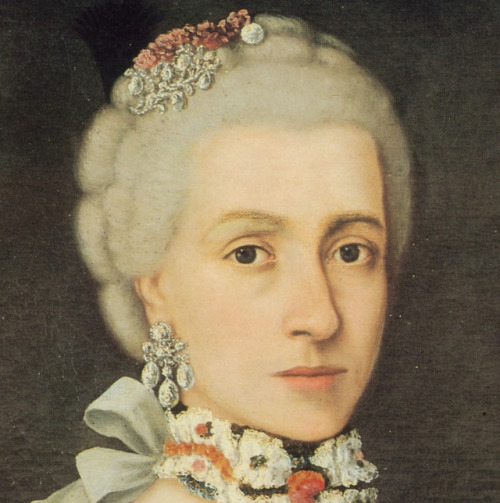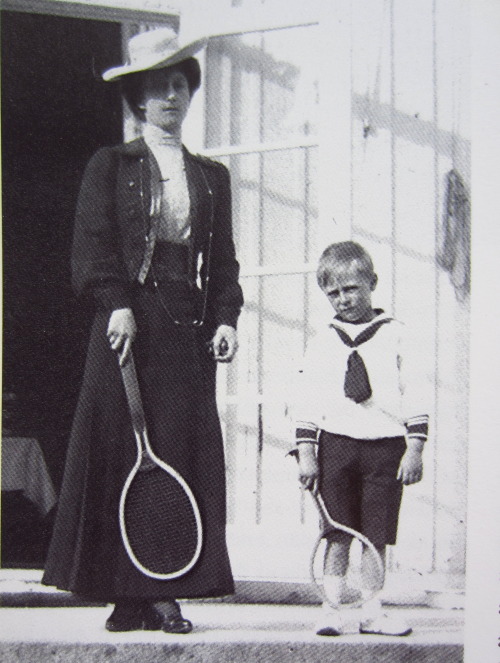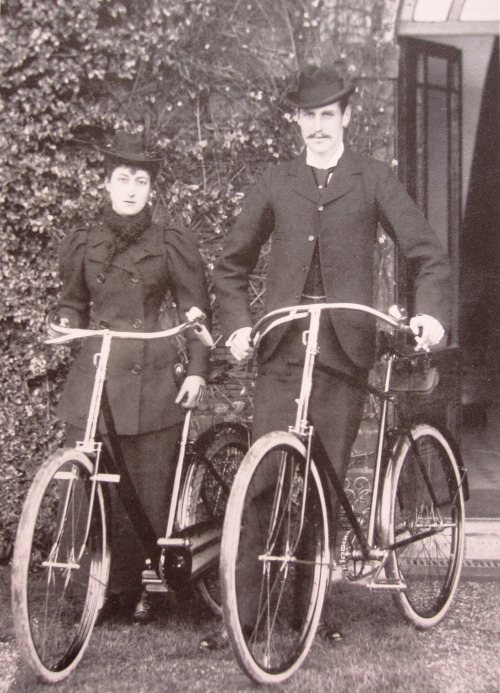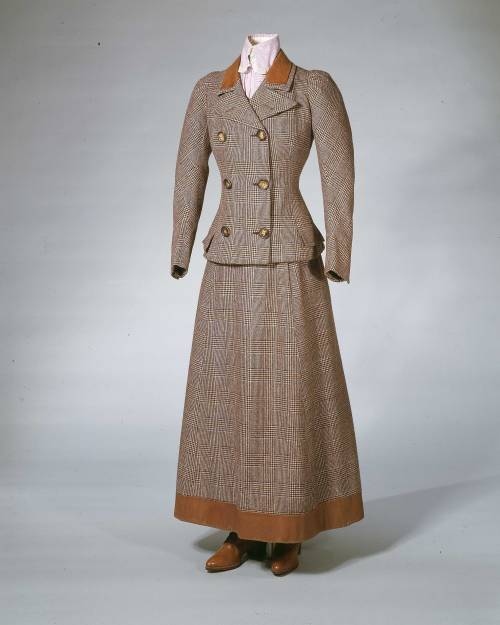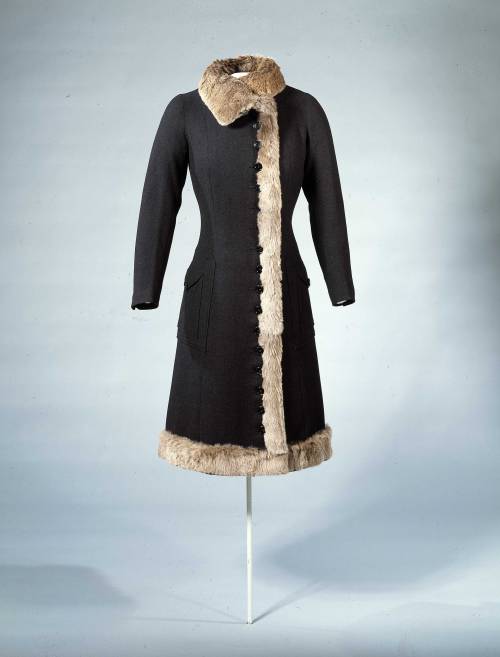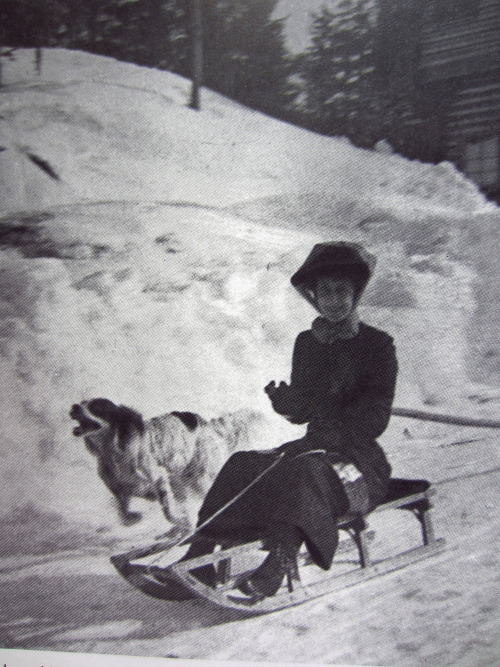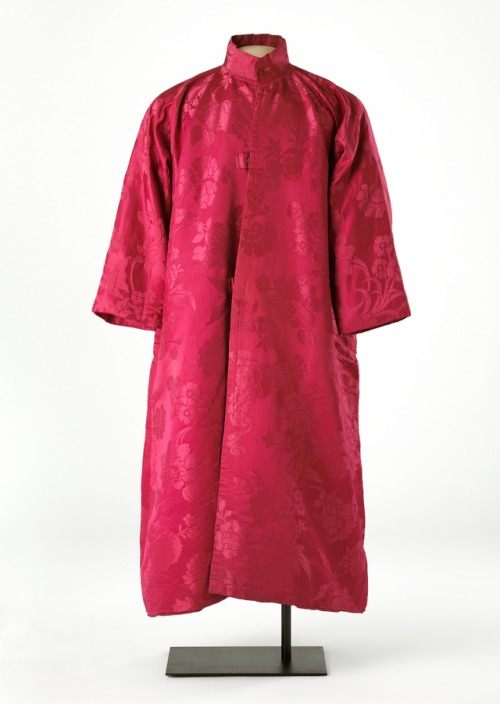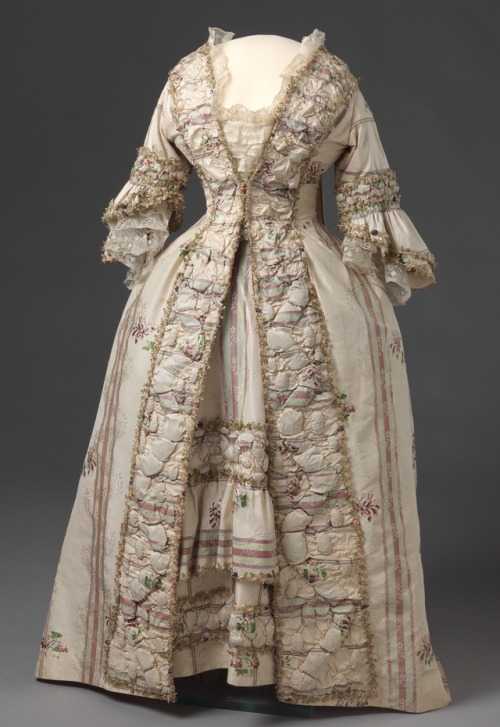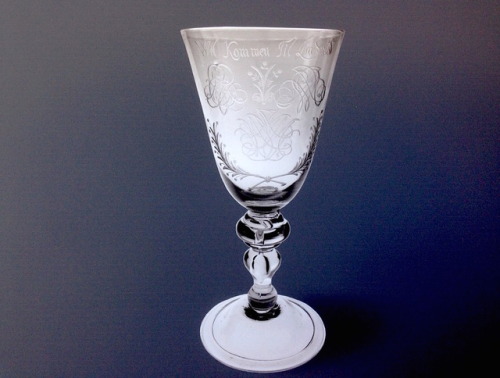#national museum oslo
Evolution in women’s fashion in Europe, 1770s to 1910s
All attires from The National Museum in Oslo
Post link
At work I came across these papercut/aquarelle artworks from 1773-75.
What I loved about them wasn’t necessarily the depicted muses, or the style of the painting. It was the cutout areas, which had been filled with scraps of fabrics on the reverse. The scraps showed traces of seams, selvages and reverse fabric sides. Looks like re-used garment pieces, or maybe cut-offs. For a dress historian this is HIGHLY interesting!
The motifs shows Calliope (top), Clio (bottom left) and Euterpe (bottom right). There is also a Melpomene in the collection; the rest of the muses are alas missing. The artist is unknown, but the backside shows a signature AMM, and various months written in English, plus years ranging from 1773-75. So by all accounts English origin. You can see the full motifs here:
http://samling.nasjonalmuseet.no/no/object/OK-17260
Post link
One of the most typical Romantic era fashion details I know of is the big, quadratic belt buckle women wore to emphasis their waist.
After some decades of a raised waistline and column-like silhouette, narrow waists once again came into fashion, helped by a new hourglass shaped corset that further underlined the shape. And the big buckle was the the finishing detail, the exclamation point. Here’s some examples.
- “Portrait of a Woman”, 1831, by Miklós Barabas (unknown location)
- “Portrait of Eleonore Thulstrup”, early 19th century, by Jacob Munch (Oslo Museum, OB.00484)
- “Portrait of Christine Kemp Keilhau”, 1835, by Johan Görbitz (Oslo Museum, OB.00258)
- Ribbon belt and golden buckle on a pigeon blue dress, 1830s (from Cora Ginsburg auctions)
- Golden buckle, 1827 (private collection)
- “Portrait of Juliane Elise Larpent”, 1827, by Aument (Linderud gård, Oslo). Here she is wearing the very buckle seen in photo 5.
- Golden buckle and belt made of the same fabric as the dress, 1830-34 (Victoria and Albert Museum, London, T.168&A-1915)
- “Portrait of Henriette Hansen”, 1831, by Richter W. (Oslo Museum, OB.00049)
- “Portrait of Paula Schedius”, 1834, by Carl Rahl (unknown location)
Post link
Matching coat and dress, of coral silk with brown velvet piping, 1909.
The coat looks inspired by 18th century riding habits and military coats. The dress, on the other hand, looks more inspired by late Medieval and/or early Renaissance style. An eclectic style in total, and interestingly also a bit modern looking, some 110 years later.
From The National Museum in Oslo (OK-12906)
Post link
A photoset of the most peculiar historical fashion I know of:
The Danish/Norwegian fashion for women from the 1630-70. A key feature is the “bluetooth” like headgarb, the last stage of the wired hood worn in the Renaissance (seen in the lower right depiction). By the mid 17th century it was reduced to a flat, three-flap linen cap with a black exterior, and it was reserved for married women only. Seeing a woman wearing such a hood in a large family depiction means you either see the wife or a married daughter.
Other key features is the large white collar turned up towards the head or out over the shoulders, heavily starched, plus the short black jacket emphasizing the belly. A white apron is also often worn. Another interesting feature is that the style is often accented with red, in lining, undergarbs or jewellery. It recreates the popular “tricolor” combo of antiquity: black, white and red.
Post link
White gowns from The National Museum in Oslo
- Robe a la Francaise, 1779
- Crinoline gown, originally from 1770-90, remodeled 1840s
- Robe a la Francaise, 1780-90
- Regency gown, 1795-1805
- Regency gown, 1809
- Evening dress for a young girl, 1840s
- Gala gown worn by Queen Maud, early 1900s
- Silk dress made by Steen & Strøm, 1906
- Gala gown worn by Queen Maud, 1912
Post link
Lace stomachers: unlike more solid stomachers these weren’t meant to hold a garment together in front. Rather, they were put on top of a solid bodice for decoration, or possibly also for practical reasons as they seem to appeare more frequently in portraits of children than of grown-up women.
The left portrait is of Catherina Elmendorf, from 1754. The middle portrait, recently sold at Sotherby’s, is an unknown child, French origin, mid 18th c.
The lace stomacher to the right is dated a bit earlier; mid 17th century. But the overall look corresponds to the portrait. From The National Museum in Oslo ( X)
Post link
Left:Queen Maud’s coronation soirée dress, 1906. Made of gold lamé covered with gold lace, and decorated with diamanté, pearls and garlands of silk roses and leafs. The gala gown was made by Morin-Blossier in Paris ( X)
Right:The magazine L’Art et la Mode describing what Queen Maud wore under a state visit to France in June 1907. The golden Morrin-Blossier dress was worn for a dinner event at Elysée, and it looks like she also wore silk gloves, a metallic choker and a feather ornament in her hair. This depiction shows the dress in its original state; with puffed sleeves, while the current dress shows a lighter lace drape. This is a later alternation. The golden Morin-Blossier dress is described as follows:
“Pour le diner a l'Elysée. Robe fourreau en drap d'or, recouverte de dentelle dans le ton; teintée d'or et rebrodée de perles et briliants. Guirlande très en relief de roses de differents ors“
(For dinner at the Elysée. Fitted dress of a golden fabric, covered with matching gold lace and embroidered with pearls and briliants. Very raised garland of roses of different gold shades)
Post link
From the jewellery box of Helene Cathrine Büchler of Linderud Manor, Oslo
This was her wedding present when she married Mogens Larsen Monsen in 1762. It consists of a wooden box with silver boxes for hair pins, pomades etc, and a silver mirror. Inside two jewellery sets; one with rock crystals in Regènce style, the other with opalized glass in a lighter, floral Rococo style. In addition monogrammed rings, shoe buckles, a fan and various chains.
The jewellery box remained in the family at Linderud for almost 250 years, until it was eventually bought by Kunstindustrimuseet/Nasjonalmuseet in Oslo in 1994. You can see more detailed photos of the whole set here:
http://samling.nasjonalmuseet.no/no/object/OK-1994-0201
Post link
The less familiar side of Queen Maud of Norway: sports
“Everyone” is familiar with her impeccable style, her slender waist and her royal background. Less known is her absolute love for sports. She’s said to have been one of the first in the British monarchy to bike in public, and biking was also a favourite activity of the just-engaged Maud and Carl (later king Haakon). Maud furthermore loved horse riding, ice skating, skiing, slleighrides, tennis etc, and encouraged her son, future king Olav, to embrace sports. He got as far as winning an Olympic medal in sailing in 1928.
Although much of the surviving wardrobe from queen Maud contains evening gowns and gala attires, there’s also traces of her sporty side. Sport coats,tailor-mades,sport dresses,ice skates,roller skates,knitted sweaters and fur-lined coatsandboots can be seen in the collection in the care of The National Museum in Oslo. Multiple private photos also exists.
Post link
Linderud Manor in the outskirts of Oslo
The manor was owned by the same family for some 300 years, and has both an amazing history and amazing items - especially from the 18th century when the prominent couple Mogens Larsen Monsen and Helene Cathrine Büchler inhabited the place. Here’s some favourites!
- Tea set for two, from Royal Copenhagen ca. 1788. A gift to the Monsen couple from the Danish-Norwegian crown prince Frederik.
- Banyan made of Spitalfields silk, 1750-60. Worn by Mogens Larsen Monsen (today in The National Museum).
- Miniature portrait of Mogens Larsen Monsen, ca. 1780.
- Robe a la Francaise, 1770s. Comes from Linderud, was probably worn by Helene Cathrine Büchler (today in The National Museum).
- The reconstructed Baroque hall, 1713-20, at Lindreud.
- The wedding present from husband to wife: a wooden box with two complete jewellery sets (parure), fan, toothpick, a mirror plus silver boxes for hairpins, pomades etc (today in The National Museum).
- Closeup of one of the jewellery sets, 1762
- Salute cannons, 1790s
- A huge class cup with engraving “Welcome to Linderud”, used for toasting ceremonies. Made by Nøstetangen in the 1760s.
Post link

